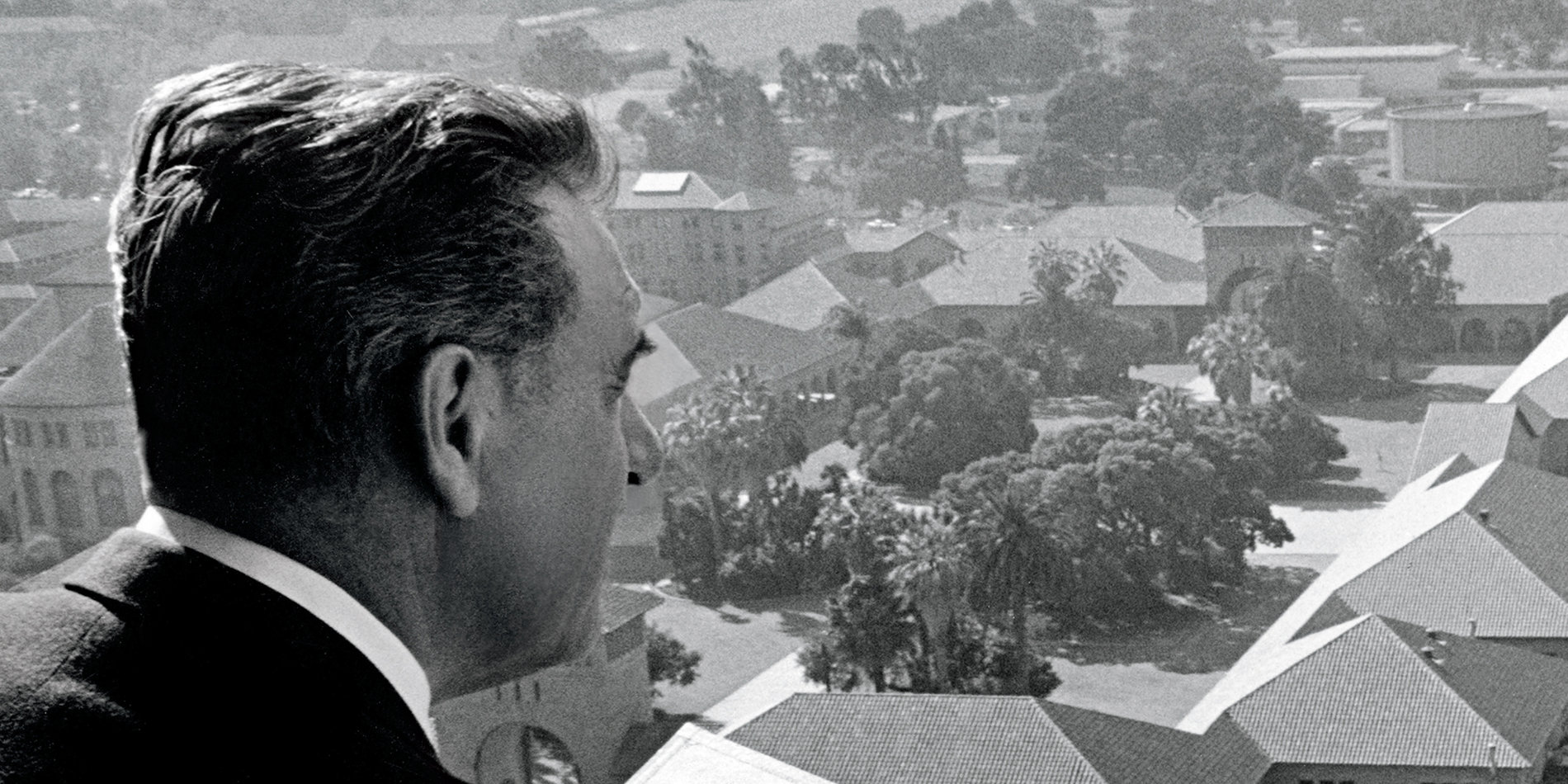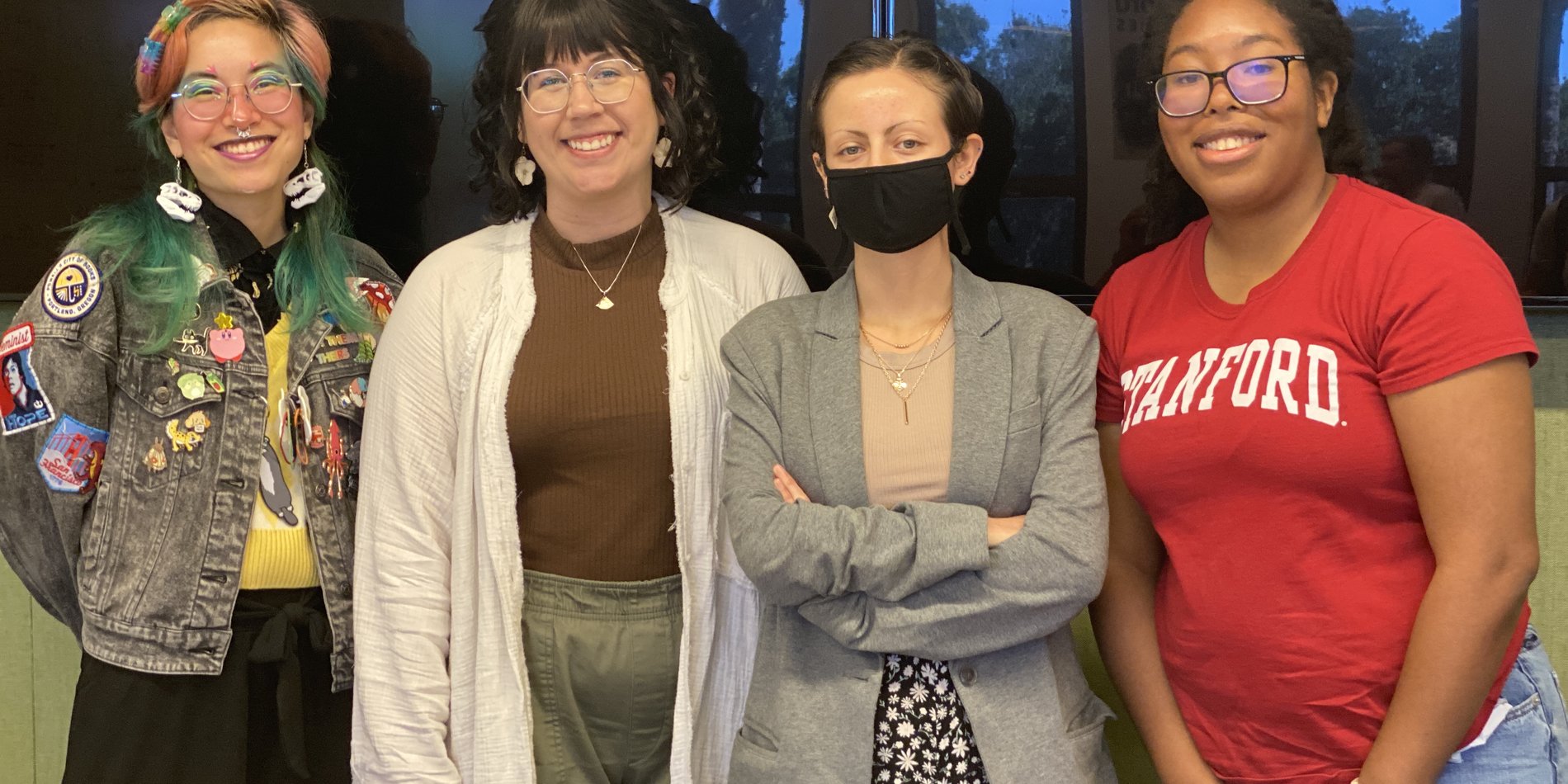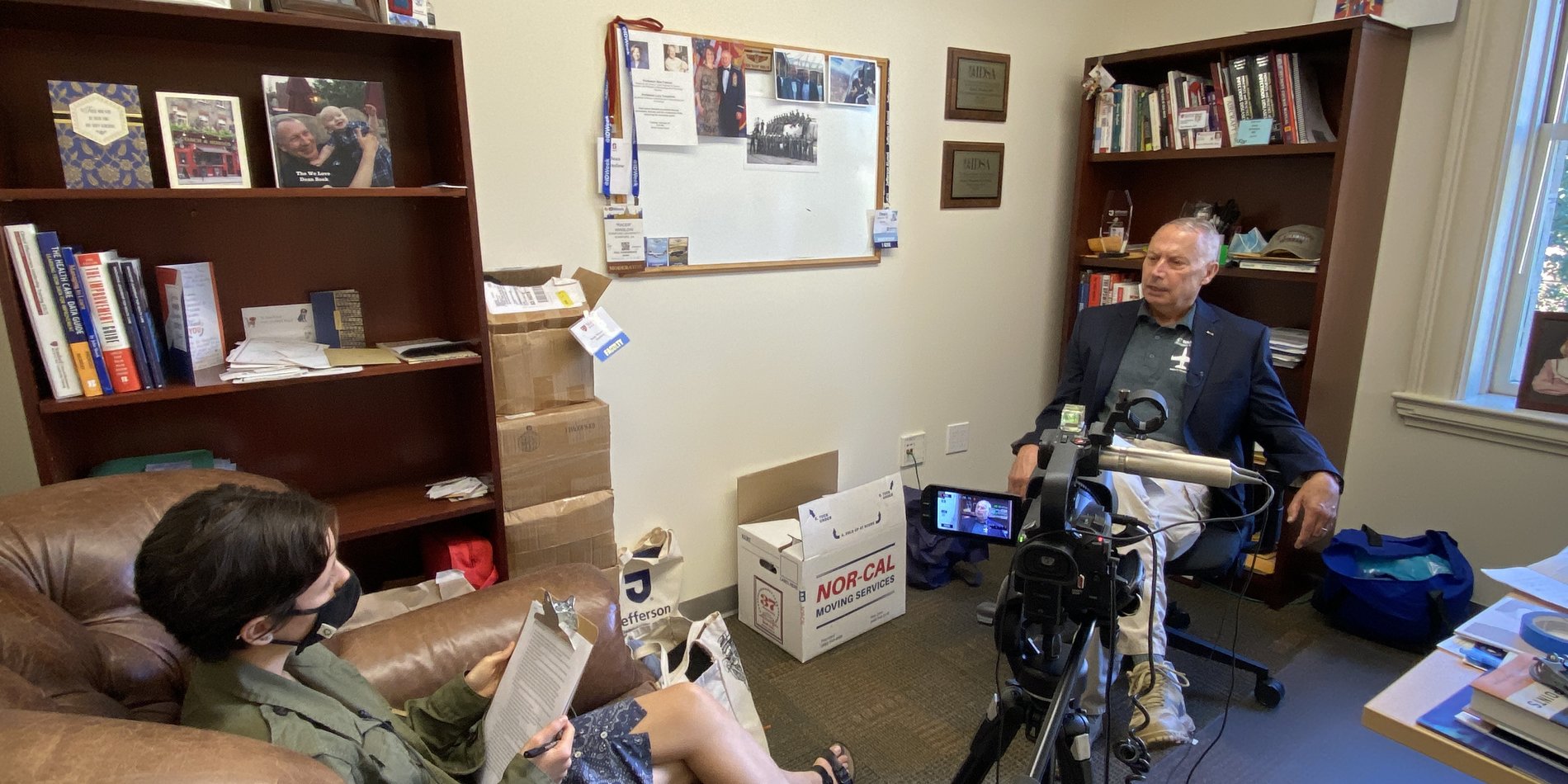A new Spotlight exhibit on John W. Gardner provides a glimpse at his life and distinguished career in public service, as well as his time at Stanford as a student, trustee, professor, and mentor.
Among the riches featured in the exhibit is a speech that Gardner gave at Stanford’s commencement in June 1959 when he was president of the Carnegie Corporation of New York. The speech contrasts the university of old, which seemed to deliberately seclude students from the “hurly burly” of the world, with modern universities like Stanford that are central to national life and enormously significant--”performing tasks on which our very survival depends.” “The point I want to leave with you today,” wrote Gardner, “is that in the difficult times ahead, there aren’t any institutions more critically important to the continued vitality and strength of our free society than our leading universities.”
Records had only listed President J. Wallace Sterling as the commencement speaker for 1959, so SHS staff were surprised and delighted to find a copy of Gardner’s speech among his papers while selecting items for the digital exhibit. “While delivered over sixty years ago,” remarked historian Natalie Marine-Street, “the speech has a message for the Stanford of today, reminding us that change is one certainty in an uncertain world and that universities are human institutions that are ‘constantly being recreated, remade, reshaped.’” Gardner also delivered the commencement address at Stanford in 1991.
Stanford Libraries is home to many of Gardner’s personal and professional papers and correspondence. There are also numerous recordings of him speaking and photographs from throughout his life, as well as a collection of oral histories with Gardner’s friends, family, and colleagues. Serving as an introduction to the papers and oral histories, this new Spotlight exhibit makes available the material in the collection that has been digitized to date to highlight Gardner’s life and his lasting impact on higher education, public service, and Stanford University.
John W. Gardner (1912-2002) earned BA and MA degrees from Stanford and a PhD from UC Berkeley. He taught psychology at Connecticut College for Women and Mount Holyoke College prior to his military service in World War II. In 1955 Gardner became the president of the Carnegie Corporation of New York, and from 1965 to 1968 served as Lyndon B. Johnson’s Secretary of Health, Education, and Welfare.
As secretary, Gardner was critical to enforcing the 1964 Civil Rights Act; launching Medicare and Medicaid; implementing the 1965 Elementary and Secondary Education Act; and launching the Corporation for Public Broadcasting.
When he resigned his cabinet post, New York Times columnist James Reston said, “The calmest voice and the coolest mind in American public life today belongs to John W. Gardner, the Secretary of Health, Education, and Welfare. Here is one man who has come through the tumult of Washington with his philosophy intact, his sense of priorities clear, and his concept of leadership practical and wise, and the sad thing about it is that he is now going away.”
John Gardner may have left Washington, but he never shied away from duty. After leaving the Johnson administration, he continued in public service, leading the National Urban Coalition and founding the advocacy organizations Common Cause and Independent Sector. Gardner remained connected to Stanford throughout his influential career, serving on the Board of Trustees from 1968 to 1982, and spending the last thirteen years of his life on campus, holding the Miriam and Peter Haas Centennial Professorship in Public Service until his retirement in 1996. The John Gardner Public Service Fellowship and the John W. Gardner Center for Youth and Their Communities are just two examples of Gardner’s lasting legacy at Stanford.
As his return to California coincided with the early years of the tech boom, Gardner was a valued advisor to Silicon Valley’s philanthropists. His encouragement to focus on being “interested rather than interesting” and commit to something larger than themselves shaped the values of many of the Valley’s emerging leaders.
At the time of Gardner’s death in 2002, Stanford President John Hennessy said, "John Gardner stands as an exemplar of the power of one individual to have a positive impact on society. His life should remind all of us that education and public service can work together as a powerful force to improve the world in which we live."
To learn more about Gardner’s life and work, visit the exhibit now available through Spotlight at https://exhibits.stanford.edu/john_w_gardner.


